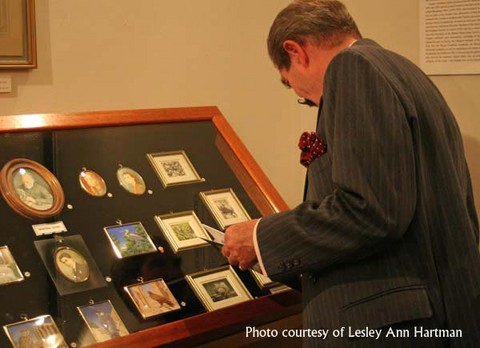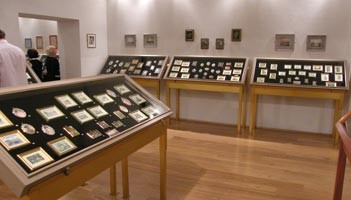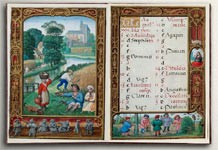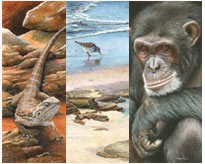WHAT IS MINIATURE ART ?
.

The National Gallery in London* describes a miniaturist as "an artist who paints in great detail on a very small scale" which sums it up perfectly. The following information and resources may prove helpful if you would like to find out more.
- Detailed brushwork that can stand considerable magnification.
- 25" or less for total surface area.
- Subject small in scale compared to life size.

One of the descriptions often used is that the painting is 'portable' - a miniature will fit in the palm of your hand. It should also be able to hold its own with larger works and stand considerable magnification without losing any of it's impact; a miniature shares all the qualities and challenges common to fine art of any size, plus a few of it's own.
To assist modern artists new to the genre some Societies established a helpful 1/6th guideline for scale, others that a portrait head or principle object cannot be more than 2" (with naturally tiny subjects there is some flexibility).
That is the essence of miniature art in the west.

Historically this kind of painting was known as limning in Britain and referred simply to watercolour paintings on vellum. These were originally stuck to a playing cards for support and grew out of the techniques used to illustrate the hand-written books and illuminated manuscripts of the middle ages, often practiced by the same artists.
A wonderful example from the 16th century is 'The Golf Book' by Simon Bening which measures 4" x 3.5", and also 'The Luttrell Psalter' from the early 14th century, with exquisitely detailed miniatures of contemporary rural life decorating the manuscript borders. You can also watch the process used to create a portrait miniature on vellum in a video by the V and A museum.

Over the centuries Miniature Art has evolved to encompass changing trends and ideas; today many different mediums and surfaces are used for a wide variety of subject matter by artists all over the globe. The word 'miniature' has passed into common usage as a direct result of those early paintings to describe something scaled down but 'perfectly formed'.
Miniatures remained hugely popular until the arrival of photography, after which time the formation of several key societies helped to preserve traditions as well as encouraging new artists into the field.
A strong revival of interest over the last thirty years has led to an increasing number of gallery shows and collectors, as well as a wider appreciation of the genre.

Stages of a miniature painting - The Ross Fountain by Tracy Hall
Miniatures are not mere curiosities, they are fine art on a small scale. Today there are strict framing rules when exhibiting with the world's miniature societies, but otherwise it is up to the artist and/or collector, for whom miniatures represent exquisite and intimate fine art, easily accommodated either alone or in a group - an entire collection of original art can be beautifully displayed on a single wall.
Anyone keen to learn more from contemporary artists will find this book excellent, Techniques of Painting Miniatures by Sue Burton, a founding member of the Hilliard Society in the UK. Further helpful information can be found on the following websites. Best of all, do visit an exhibition in person if you can!
*Text for the National Gallery website written by Katherine Coombs, curator of the miniature collection at the Victoria and Albert Museum, who further explains the history in fascinating detail in her book, 'The Portrait Miniature in England' and her paper 'A kind of Gentle Painting - Limning in 16th Century Britain' .
